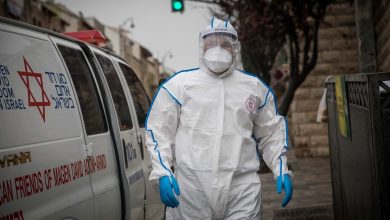A complete guide to image recognition
In essence, image recognition is about detecting objects, while image classification is about categorizing images. While both image recognition and object recognition have numerous applications across various industries, the difference between the two lies in their scope and specificity. This technology has a wide range of applications across various industries, including manufacturing, healthcare, retail, agriculture, and security. Facial recognition is the use of AI algorithms to identify a person from a digital image or video stream.
Note that there are different types of labels (tags, bounding boxes or polygons) depending on the task you have chosen. An artificial neural network is similar to a human neural network, however an artificial neuron is a mathematical function! Keep in mind that an artificial neural network consists of an input, parameters and an output. Photo or video metadialog.com recognition can be performed at different degrees of accuracy, depending on the type of information or concept required. Indeed, a model or algorithm is capable of detecting a specific element, just as it can simply assign an image to a large category. In this example, I am going to use the Xception model that has been pre-trained on Imagenet dataset.
Working of Convolutional and Pooling layers
Today people make fake accounts for online scams, the damaging reputation of famous people, or spreading fake news. Here you should know that image recognition techniques can help you avoid being prey to digital scams. You can simply search by image and find out if someone is stealing your images and using them on another account. So the first most important reason behind the popularity of image recognition techniques is that it helps you catch catfish accounts. You must know that image recognition simply identifies content on an image, whereas a machine vision system refers to event detection, image reconstruction, and object tracking.
- Neural networks learn features directly from data with which they are trained, so specialists don’t need to extract features manually.
- The data samples they considered were relatively small and the designed neural network was constructed.
- This can be done by comparing the extracted features with a database of known images.
- If the input meets a minimum threshold of similar pixels, the AI declares it a hotdog.
- Therefore, artificial intelligence cannot complete imaginary lines that connect fragments of a geometric illusion.
- That may be a customer’s education, income, lifecycle stage, product features, or modules used, number of interactions with customer support and their outcomes.
Find out how the manufacturing sector is using AI to improve efficiency in its processes. It is, for example, possible to generate a ‘hybrid’ of two faces or change a male face to a female face using AI facial recognition data (see Figure 1). Every iteration of simulations or tests provides engineers with new learning on how to best refine their design, based on complex goals and constraints. Finding an optimum solution means being creative about what designs to evaluate and how to evaluate them. For marketing teams and content creators, alternate text might not always be front-of-mind.
Privacy concerns for image recognition
SD-AI is a type of artificial intelligence (AI) that uses deep learning algorithms to identify patterns in images. Unlike traditional image recognition methods, which rely on hand-coded rules, SD-AI uses a self-learning system to identify objects in images. This system is able to learn from its mistakes and improve its accuracy over time. Researchers can use deep learning models for solving computer vision tasks. Deep learning is a machine learning technique that focuses on teaching machines to learn by example.
It has many benefits for individuals and businesses, including faster processing times and greater accuracy. It’s used in various applications, such as facial recognition, object recognition, and bar code reading, and is becoming increasingly important as the world continues to embrace digital. Thus, about 80% of the complete image dataset is used for model training, and the rest is reserved for model testing. It is necessary to determine the model’s usability, performance, and accuracy. As the training continues, the model learns more sophisticated features until it can accurately decipher between the image classes in the training set. Image recognition is also poised to play a major role in the development of autonomous vehicles.
AI Image Recognition: Common Methods and Real-World Applications
Their global team of over 4.5 million workers serves 4 out of 5 tech giants in the U.S. Image recognition can be used in the field of security to identify individuals from a database of known faces in real time, allowing for enhanced surveillance and monitoring. It can also be used in the field of healthcare to detect early signs of diseases from medical images, such as CT scans or MRIs, and assist doctors in making a more accurate diagnosis. As technology advances, the importance of understanding and interpreting visual data cannot be overstated.

Essentially, it’s the ability of computer software to “see” and interpret things within visual media the way a human might. Chooch is a powerful, feature-rich computer vision platform for building object recognition and image recognition models. We’ve helped businesses of all sizes, industries, and technical levels deploy and manage visual AI and computer vision solutions. In this article, we talk about digital image processing and the role of AI in it.
Principles and Foundations of Artificial Intelligence and Internet of Things Technology
In 2019, Blippar announced the launch of “WebAR” which is a web-based AR solution that uses object and image recognition. This technology will be integrated into Blippbuilder so that anyone can create and distribute webAR. In other words, image recognition is a broad category of technology that encompasses object recognition as well as other forms of visual data analysis. Object recognition is a more specific technology that focuses on identifying and classifying objects within images. Image recognition matters for businesses because it enables automation of tasks that would otherwise require human effort and can be prone to errors. It allows for better organization and analysis of visual data, leading to more efficient and effective decision-making.
Can AI analyze a picture?
OpenText™ AI Image Analytics gives you access to real-time, highly accurate image analytics for uses from traffic optimization to physical security.
AI-based image recognition can identify and remove inappropriate content from their platforms. Any products that do not match the written description or seem counterfeit can be flagged and removed from the platform immediately. Environmental monitoring and analysis often involve the use of satellite imagery, where both image recognition and classification can provide valuable insights. Image recognition can be used to detect and locate specific features, such as deforestation, water bodies, or urban development. It’s used to classify product images into different categories, such as clothing, electronics, and home appliances, making it easier for customers to find what they are looking for. It can also be used in the field of self-driving cars to identify and classify different types of objects, such as pedestrians, traffic signs, and other vehicles.
Technologies vary from platform to platform but normally include:
Marc Emmanuelli graduated summa cum laude from Imperial College London, having researched parametric design, simulation, and optimisation within the Aerial Robotics Lab. He worked as a Design Studio Engineer at Jaguar Land Rover, before joining Monolith AI in 2018 to help develop 3D functionality. Image recognition is a type of artificial intelligence (AI) programming that is able to assign a single, high-level label to an image by analyzing and interpreting the image’s pixel patterns. Explore the exciting Kentico Xperience feature AI Image Recognition for image alternative recognition, leveraging Microsoft Azure cognitive services. The following three steps form the background on which image recognition works.
- Businesses can leverage this technology to showcase the utility of their products to customers.
- Some companies have developed their own AI algorithm for their specific activities.
- Many of the IPT functions support C/C++ code generation, so they can be used for deploying embedded vision systems and desktop prototyping.
- These filters are small matrices that are designed to detect specific patterns in the image, such as horizontal or vertical edges.
- You can also leverage the Chooch AI platform to train your own highly accurate object recognition model using a custom dataset, and then deploy it in the cloud or with an edge AI platform.
- Image segmentation is a method of processing and analyzing a digital image by dividing it into multiple parts or regions.
Image recognition techniques and algorithms are helping out doctors and scientists in the medical treatment of their patients. Nowadays, image recognition is also being used to help visually impaired people. Also, new inventions are being made every now and then with the use of image recognition. High-tech walking sticks for blind people are one of the most important examples in this regard.
Step 1: Preparation of the training dataset
Various AI systems and models can read images, particularly those designed for optical character recognition (OCR) tasks. OCR models can extract text from images and convert it into machine-readable text. These models are commonly used in applications such as document digitization, image-to-text conversion, and text extraction from images.
What AI model for face recognition?
What Is AI Face Recognition? Facial recognition technology is a set of algorithms that work together to identify people in a video or a static image.
How is AI used in facial recognition?
Face detection, also called facial detection, is an artificial intelligence (AI)-based computer technology used to find and identify human faces in digital images and video. Face detection technology is often used for surveillance and tracking of people in real time.




